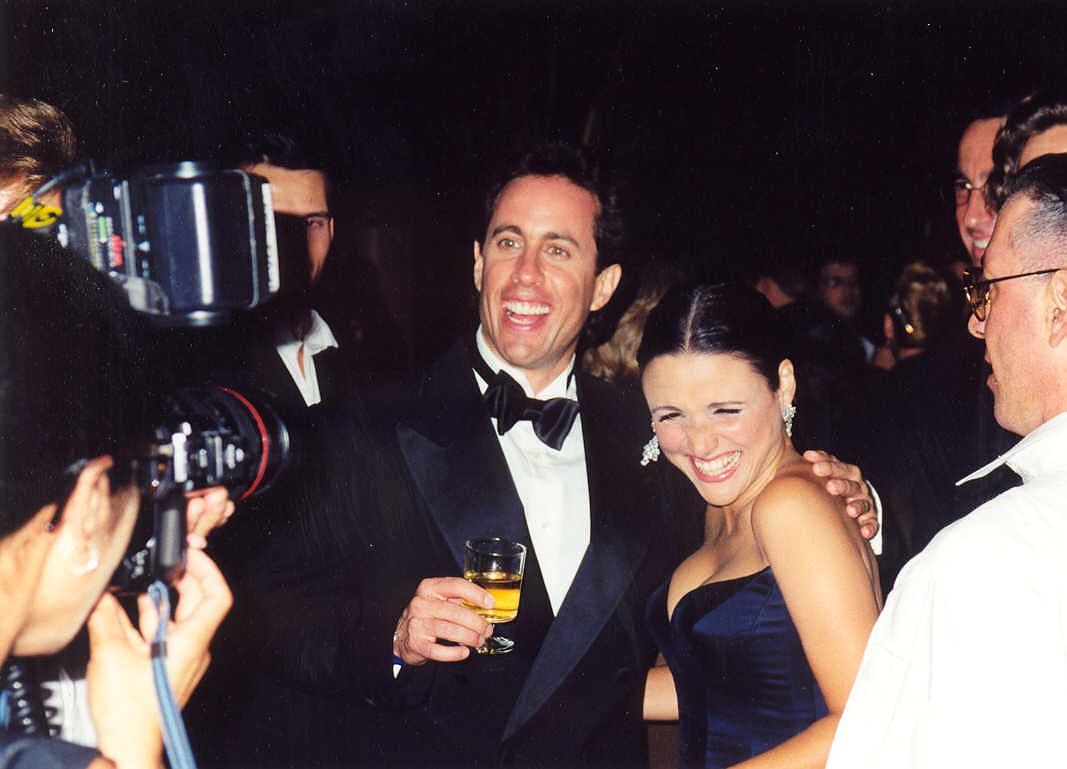Worth Reading: "Translating Seinfeld" by Jennifer Armstrong

Language services professionals know how difficult it can be to translate information from one language to another. It isn't just about word substitution. There are connotations, cultural implications, the intention of the speaker, and the understanding of the listener that is considered, and all must be juggled and rectified before a deliverable interpretation can be forwarded. An interesting long-form article on The Verge website explores the difficulty of joining trans-cultural translation and humor. How can both be faithfully presented?
In Jennifer Armstrong's, "Translating Seinfeld" she examines one woman's difficulty dubbing Seinfeld for German audiences. Recently, all of Seinfeld has been made available on Hulu, a predominantly US-focused online streaming service that is available only to audiences in the US and Japan. Meanwhile, internationally distributed Netflix dropped out of the bidding for streaming rights early on. Armstrong surmises the, "ability to share pop culture across international waters — especially the nuances of comedy — remains limited by our ability to understand each other. And even when we speak the same language, our jokes may still not translate, or resonate." Thus, Netflix was not keen to take it on.
She argues Seinfeld's distinctive form of humor, "poses special translation problems." International audiences have demonstrated bafflement with the show's laugh track, a pattern of missing the punchline, and a tendency to laugh at the character's presence, rather than at the jokes.
Sabine Sebastian, a Seinfeld fan, works as a director, scriptwriter, and sometimes voice actor in Germany's lip-synch dubbing business, took on the task of bringing Seinfeld to German audiences. No stranger to the danger of a direct translation, she nonetheless underestimated the challenge she had in store.
The plan was for the German dubbing cast and crew to labor through the five seasons that had shown in the US and work on the succeeding episodes as they aired. But, almost immediately, there were problems. The dialogue book writers were translating too literally. "Subtle word choices could make a difference, and she [Sebastian] changed a lot of the scripts as she recorded. By the show's eighth season, she finally took over all writing duties."
Armstrong relates to the reader how arduous translating a dialogue-heavy script can be, noting, "Translating a single episode can take longer than an entire action movie." Seinfeld exacerbated this difficulty. "The entire process for a 22-minute Seinfeld episode took three work days, or about 18 hours total." Jewish references proved tricky, as did the American customs and wordplay.
"Translating Seinfeld" validates the difficulty of translation and interpretation, especially when it comes to humor and imbedded cultural norms. Even in instances where no language barrier is in place, such as English, Irish, Scottish, American, and Australian films, showing them outside their intended audiences can cause confusion. Why do the characters care so much about certain things? Why is something supposed to be funny? When a language difference is added on top of that, efforts at bridging the cultural divide can be insurmountable. However, Sabine Sebastian managed it and Jennifer Armstrong's analysis of that challenge is a fascinating read.
Photo by Alan Light, licensed under the Creative Commons Attribution 2.0 license, courtesy of Wikimedia Commons
Using state-of-the-art IT & telecommunication technologies, ablio makes language interpretation services easily available to everyone, in any context, by creating tools and service platforms that are supported by its own community of live interpreters.
For further information please visit our websites:
● ablio.eu – General Website
● ablio.com – OPI Platform
● ablioconference.com – Simultaneous Interpreting Platform

